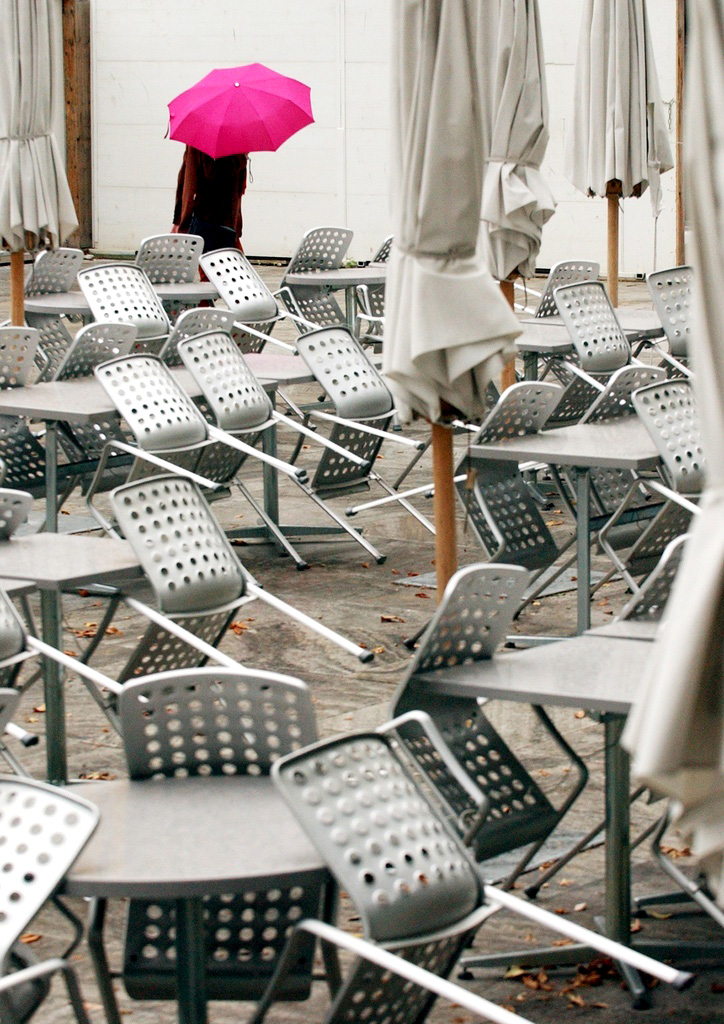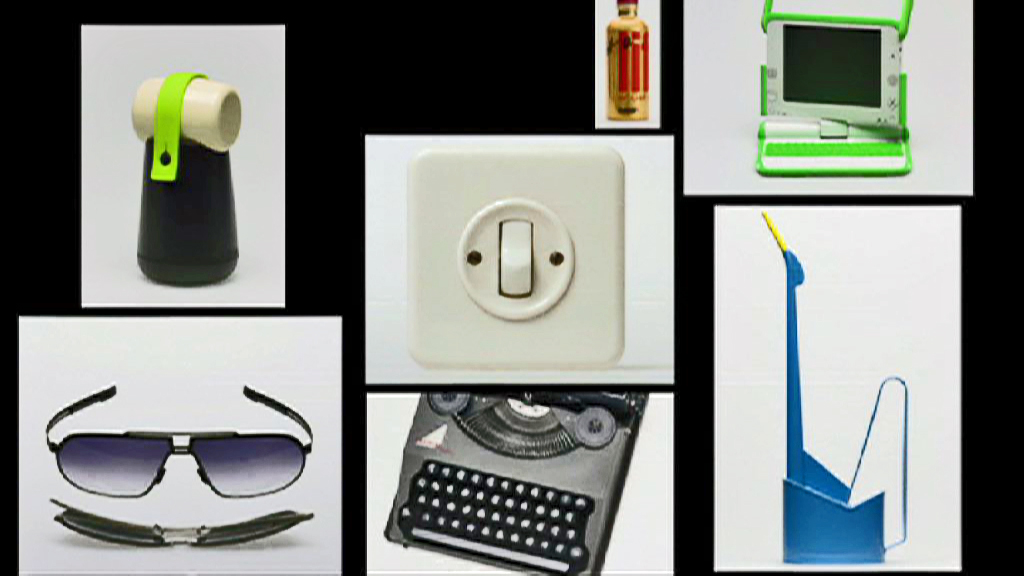Swiss design moves from functional to fun

Swiss industrial design has for decades been recognised for its robust functionality and simple elegance. But the playfulness and imagination of a new generation of designers is leading to a fresh outlook on Swiss design.
“Design can no longer be defined according to national characteristics. Designers today must think on an international scale,” the chair of the Swiss Federal Design Commission, Patrick Reymond, told swissinfo.ch.
The result is that Swiss industrial design has evolved radically, shedding its functional identity in favour of a more imaginative approach shared by designers abroad, one that also “calls upon emotions and that can tell a story”, noted Reymond, a founding partner of Atelier Oï, a leading Swiss design agency with an international following.
On the other hand, what continues to set Swiss design apart is the closeness of designers with the production process of their own designs.
“We are involved in all the stages of the manufacturing, which allows for greater attention to detail, and occasionally, to adjustments in the design,” he said.
Reymond believes that the continued quality craftsmanship of Swiss design reflects the agrarian roots of its people: “We like to think with our hands,” he said. This in turns leads to the investigation of new materials and their potential. Atelier OÏ, for instance, is constantly expanding its materials library.
Cross-fertilisation
Because the needs of clients have expanded, the role of designers has as well, Reymond said: “We are often called upon to stage environments or orchestrate events.”
A greater degree of collaboration between different disciplines, for example architecture or graphic design, has therefore become the norm, a particular advantage in a country as small as Switzerland, he highlighted.
He dates the pluridisciplinary approach in design to the Italian architect, Alberto Sartoris. Sartoris, who lived and taught in Lausanne, defended the concept that an object must be designed in response to the space that it will occupy.
Chantal Prod’Hom, who directs mudac, Lausanne’s design museum, agrees that the blurring of frontiers between disciplines extends to national identities as well.
Swiss industrial design used to be characterised by minimalism, she said, which was in direct relation to Switzerland’s industrial rigorousness and remarkable ability to miniaturise. In fact, many iconic objects, such as the Rex vegetable peeler or Swiss army knife, grew anonymously out of the industrial process.
The right questions
Proh’Hom confirms that increased exchanges between designers from different countries has now released a story-telling approach in younger designers.
“Design is a great way to keep asking the right questions,” she said, which is why she has positioned mudac firmly on the scene of contemporary design.
This approach differs from that of the mudac’s sister museum in Zurich, the Museum für Gestaltung, dedicated to a more historiographic line on design.
The differences between these two institutions can be said to amusingly summarise the different approaches to design in the regions in which they are based, one forward-looking and the other still impregnated with the past.
Patrizia Crivelli heads the department of design promotion at the Swiss Federal Department of Culture. For the past 15 years, she has had a bird’s eye view of the situation in Switzerland.
She pointed out that the simple elegance for which Swiss design was known was about “finding answers to problems in simple ways”. In the German-speaking part of the country, designers continue to be influenced by the industrial design of the fifties, one that Crivelli describes as “straightforward” (see sidebar).
Designers in the French-speaking part of Switzerland, on the other hand, are “more open and playful”, she suggested. “Borders are now open and the cross-fertilisation with international designers has infused imagination into Swiss design.”
Playful new generation
With the Lausanne University of Art and Design, first under the stewardship of the magnetic, but somewhat imperious Pierre Keller, and now with the talented and urbane Alexis Georgacopoulos, a whole generation of designers “is getting a fresh start”, according to Crivelli.
“They don’t take themselves too seriously,” she expanded.
Asked how the manufacturing industry has responded to their avowed playfulness, she cited the example of furniture manufacturer Pfister, who sponsors a programme of New Swiss Design that edits funky furniture and textiles and that sells well,
She also mentioned the Swiss Design Prize, sponsored by Swiss manufacturers, that acts as a production springboard for young designers. It is useful leverage to the government-sponsored Swiss Federal Design Award that she organises.
“Design is Switzerland is little by little becoming a motor to success,” said Reymond, citing the examples of good design ideas, like tarpaulin bags by Freitag and sports luxury watches by Hublot, that have actually fuelled the creation of companies.
“The next step is that we must become better known and increase our visibility,” he said, adding that the presence of four different cultures within one country – and the particular dynamics that it creates – can be an advantage when learning to export.
“We have the ability in Switzerland to follow an idea right through from beginning to end. That is our greatest strength,” he concluded.
– The Swiss Federal Design Award organised by the Federal Culture Office awards 18 prizes of SFr25,000 each year. Scholarships for six-month studio residencies in New York and Amsterdam are also offered.
– Design Preis Schweiz, sponsored every two years in Langenthal (the next one is in 2013) by the manufacturing industry, sees its role as encouraging “adventurous ideas” in fashion, product, textile, interior and furniture design.
Alfredo Häberli – Zurich
Atelier Oï – Neuville
Big Game – Lausanne
d’Esposito & Gaillard – Lausanne
Moritz Schmid – Zurich
Nicolas Le Moigne -Cheseaux/Lausanne

In compliance with the JTI standards
More: SWI swissinfo.ch certified by the Journalism Trust Initiative


You can find an overview of ongoing debates with our journalists here. Please join us!
If you want to start a conversation about a topic raised in this article or want to report factual errors, email us at english@swissinfo.ch.